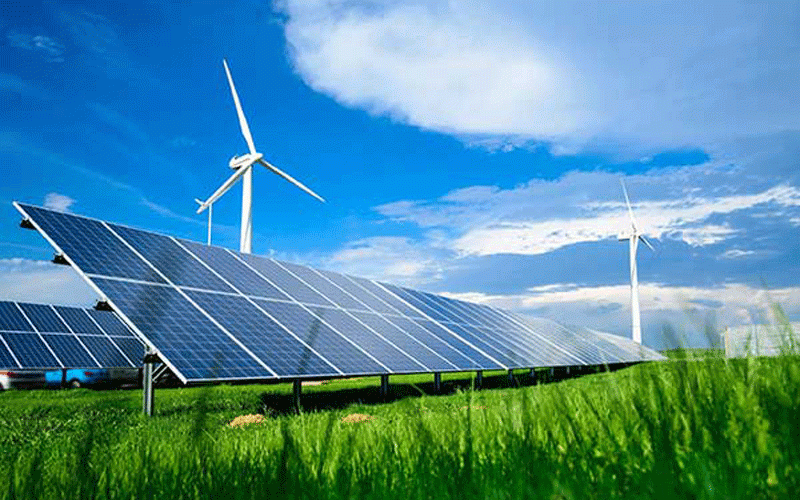
The energy industry is on the cusp of a transformation the likes of which the economy hasn’t experienced since the Industrial Revolution. While the past decade has been characterised by steady progress towards clean power generation and vehicle electrification, the combination of a series of new economic realities including an emergent corporate consensus, new and significant regulatory and market creation mechanisms, supply chain disruptions, and growing energy needs of the existing industrial landscape threaten to fundamentally shift the nature of competition in the industry and accelerate innovation in a way heretofore unseen.
The Inflation Reduction Act (IRA) projects to unlock more than $300 billion in federal spending by 2030, a number that is tiny compared to the $3.5 trillion in private sector capital that it will mobilize across decarbonisation pathways. Simultaneously, corporate commitments to decarbonizing have increased from 23% of Fortune 500 companies in 2019 to over 66% in 2023. The IRA and increasing corporate commitments layer on top of the pre-existing market trend to electrify transportation. Taken together with the increased incentives for electrification of other industrial processes, it is projected that the U.S. electrical grid will need to increase capacity by 4x to meet net zero requirements.
Together, these account for a demand shock to the energy industry that we haven’t seen in over a century: multiple exponential demand growth curves implanted atop one another. Historical examples of this are few and far between. Perhaps the most appropriate comparison is to the invention of chemical fertilizers at the beginning of the 20th century. As the world was running short on food supply, and with demand rapidly climbing, German chemists Fritz Haber and Carl Bosch invented a process for cheaply producing chemical fertilisers that expanded food supply for the growing world. Perhaps the impending boom is more like the demand for manufacturing capacity during World War II, which ignited industrial giants like the domestic Big-3 automotive behemoths GM, Ford, and Chrysler.
The implications of this market transformation across the energy industry are significant. For the first time in the history of clean energy development, demand now outstrips supply, by a lot. Differentiation, and therefore, success, in the market will require access to the production of clean technologies that have yet to be scaled. The winners of the energy transition will be those companies and investors willing to take on the risk of scaling these new technologies.
This creates a new clean energy paradigm: existing energy players will be required to compete on innovation. The survival of large firms will depend on their willingness and ability to productively collaborate and engage with upstart innovative firms. In a risk-averse, oligopolistic industry, conventional strategies built around waiting for technology to “be ready” are no longer tenable.
While there are lots of upstart firms working to scale solutions today, those same firms will be supply-constrained by construction as they move through the scale-up process, likely through 2035, by which time most regulatory requirements and corporate commitments need to be accommodated. Critically, this limited supply of new technologies available is going to be provided to those firms that begin phased collaborations with startups today.
Advanced orders for manufacturing capacity through the end of the decade and into the 2030s, across clean power, electrification, industrial decarbonization, hydrogen, and carbon removal, are already being contracted today. Firms that do not productively engage with innovative new technologies today will not have access to those technologies on time horizons that enable them to hit 2035 targets.
The implications of this new competitive environment are already visible in the market today. Corporate participation in venture capital investment of cleantech companies has risen 50% over the last five years and makes up a growing segment, greater than 60% of invested capital for these ventures. Alongside those equity investments, corporate players are engaging in multi-year technology development partnerships with high-growth, though early-stage cleantech ventures. Examples include Nabors’ collaboration with Quaise to develop advanced geothermal capabilities and National Grid’s partnership with VEIR to develop and deploy a novel transmission line technology.
- Why are we still pitting jobs against public health?
- Rwandanese Refugee Arrested For US$85 240 theft
- Ishan basks in Annatoria collabo glory
- Mama’s peanut butter maker injects US$1,5m, lifts award
Keep Reading
Across energy technology verticals, partnerships are being developed to deploy pilot projects for new technologies – subscale demonstrations of performance and economic validation. Head to an industry conference and energy majors are collectively patting themselves on the back for their engagement with startups through these pilot efforts. Yet still, pilots themselves are not the correct barometer of success. The signal of true partnership and the viability of both established firms hinges on whether those pilots convert to full-scale projects and the speed at which that takes place. This is a shibboleth moment for the industry in which the true colors, intents, capabilities, and forward-going prospects of established firms will be on display.
Meanwhile, the financial world is gearing up to allocate significant capital to deploy new technologies. Over the last year, the world’s largest funds have oriented toward the deployment of cleantech. KKR launched its first $7B climate focused fund; TPG Rise launched a $10B investment vehicle for the energy transition. Brookfield and Blackrock have made similarly aggressive commitments. This private capital adds fuel to the competitive landscape, supporting more nascent technology developers as they scale, and filling capital gaps that previously inhibited cleantech companies from approaching the scales necessary to compete with incumbent industrial players.
For the last century, the energy industry has been able to avoid common pitfalls of pure Schumpeterian creative destruction, with competition taking place at scale utilizing inexpensive cost of capital, and importantly, construction rigor. However, the nature of that competition is changing, and the seeds of creative destruction in the energy industry have now been sown, with the future of the industry hinging on firms’ ability to productively and collaboratively engage with young innovative firms. The winners will have the courage to move quickly to collaborate while leveraging their skills of deployment at scale to transform the energy economy.
—Renewable Energy World










